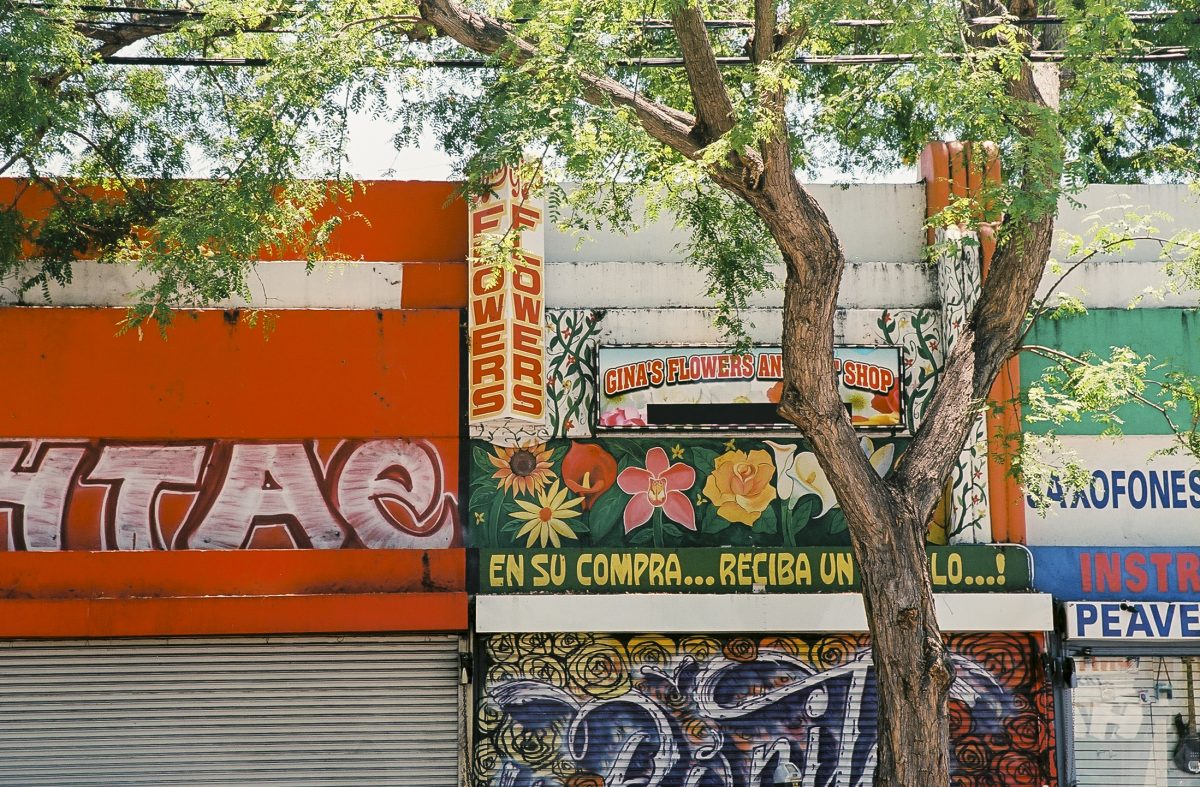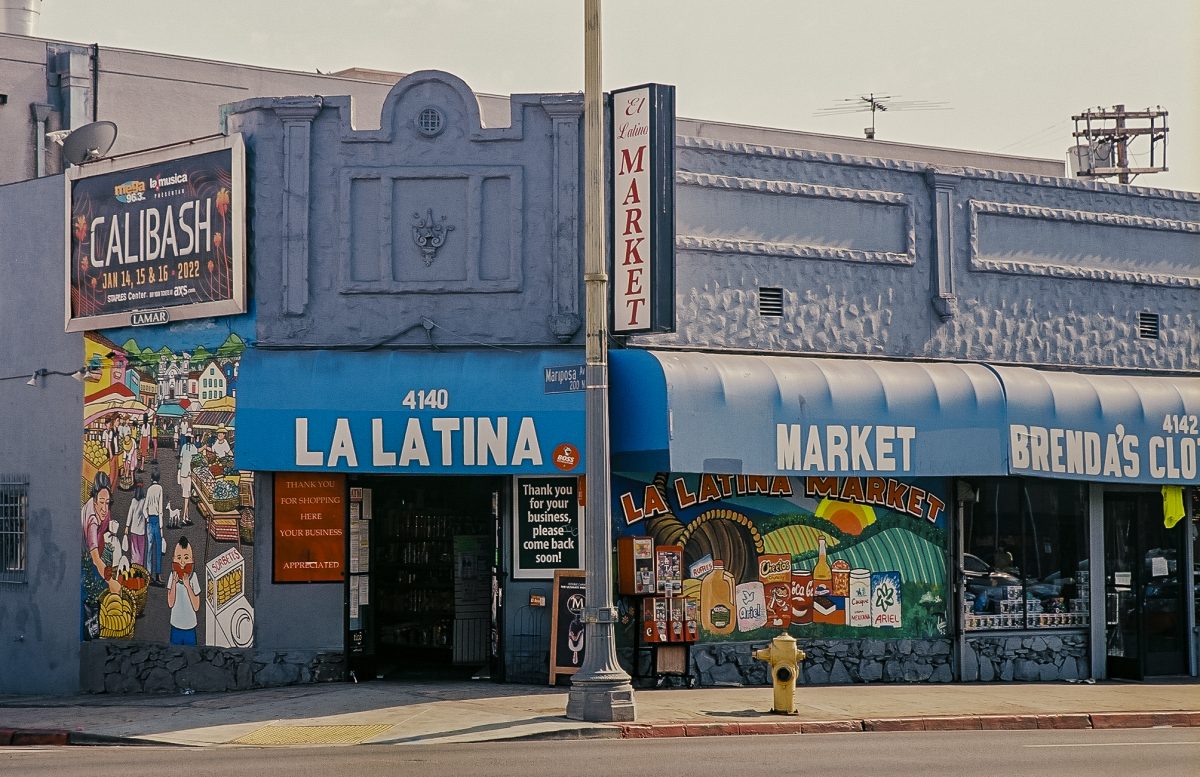
Editor’s Note: This article is part of a series on the history of graphic design and social activism in California, with a focus on Los Angeles, published in partnership with KCET Artbound.
LOS ANGELES — When Emilio Carrillo came to the United States from El Salvador 24 years ago, he started making friends who would ask him to paint murals on the walls of their small businesses. The 63-year-old construction worker and self-taught painter doesn’t make a living off of his art, but it’s a gift he’s had since childhood when he would create intricate drawings on chalkboards for school lessons.
His most well-known work is on the side of an apartment building in Pico-Union. The extensive mural, painted about 12 years ago, features six panels of intricate landscapes of flora and fauna, each representing a different country in the Americas: Mexico, El Salvador, Honduras, Guatemala, Nicaragua, and Ecuador. Commissioned by the owner of the building, the idea was to honor the ethnic makeup of the neighborhood, especially since the building is along the route of the Central American Independence Day Parade that happens every September 15.

In order to accurately depict the cultural and natural signifiers of each country, Carrillo says that, as he painted, he spoke to pedestrians from Honduras; Guatemalan tenants who lived in the building above the mural; his ex-partner from Nicaragua; and the owner of the building who is from Ecuador. When it came to painting his native El Salvador, Carrillo recalled memories of growing up near the countryside, where his eyes feasted on the dense foliage and colorful animals. While painting Mexico, Carrillo drew from his journey to the United States. “I came here via train and Mexico is engraved in my memory, especially the nopales,” he explained.
For Carillo, painting is a source of peace and tranquility from the troubles of life. His practice is collaborative, painting elements like butterflies or iguanas based on suggestions from people who pass by. “Sometimes there are elders in wheelchairs who left their countries a long time ago and you can see the joy in their faces watching as I paint countryside landscapes that remind them of their childhood,” said Carillo. “I feel like I help humanity even for just a moment.”
Carillo is one of many sign painters and muralists who have helped create the visual language of Los Angeles. Beyond helping businesses promote themselves, these hand-painted, one-of-a-kind signs and murals create a sense of place and belonging for residents. From markets and barbershops to restaurants and botanicas, they’ve become iconic signifiers distinguishing particular neighborhoods.

In predominantly Latinx neighborhoods, signs and murals are often painted in Spanish and have motifs like the quetzal bird of Guatemala or La Virgen de Guadalupe of Mexico that connect people to their culture. These art pieces are meant to attract and honor the existing residents of that particular neighborhood, whether it be Mexican food items on the facade of a restaurant Boyle Heights, an ode to Central American countries on the wall of an apartment building in Pico-Union, or a colorful farm landscape outside a mercado in East Hollywood.











0 Commentaires